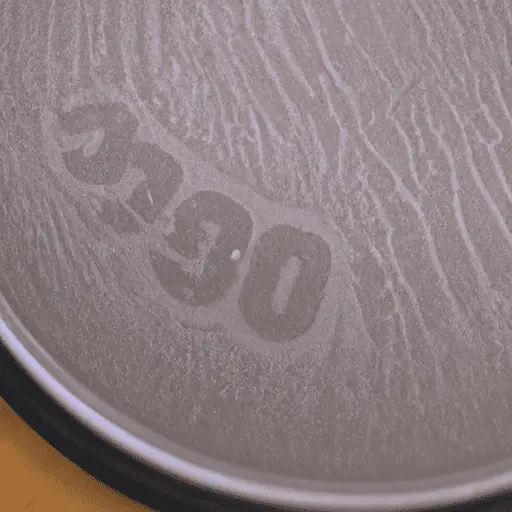Excessive Sweating: Causes, Symptoms, and Treatment
-
Table of Contents
- Excessive Sweating: Causes, Symptoms, and Treatment
- Key Takeaways
- Introduction: Unraveling the Mystery of Excessive Sweating
- Understanding Hyperhidrosis: Causes and Types
- Recognizing Hyperhidrosis: Symptoms and Impact
- Addressing Hyperhidrosis: Treatment Options
- FAQ Section: Common Questions About Hyperhidrosis
- 1. Can hyperhidrosis be cured?
- 2. Is hyperhidrosis a sign of a serious health condition?
- 3. Can diet affect hyperhidrosis?
- 4. Can stress cause hyperhidrosis?
- 5. Can hyperhidrosis be prevented?
- Conclusion: Navigating the Challenges of Hyperhidrosis
- Further Analysis
- Key Takeaways Revisited
Excessive Sweating: Causes, Symptoms, and Treatment

[youtubomatic_search]
Key Takeaways
- Excessive sweating, also known as hyperhidrosis, is a common condition that can significantly impact a person’s quality of life.
- There are two types of hyperhidrosis: primary and secondary, each with different causes and treatment options.
- Common symptoms of hyperhidrosis include frequent sweating, clammy or wet palms, and social anxiety or embarrassment.
- Several treatment options are available for hyperhidrosis, ranging from topical treatments to surgical procedures.
- Consulting with a healthcare professional is crucial for proper diagnosis and treatment of hyperhidrosis.
Introduction: Unraveling the Mystery of Excessive Sweating
Sweating is a natural body function that helps regulate body temperature. However, when it becomes excessive, it can lead to physical discomfort, social embarrassment, and psychological distress. This condition, known as hyperhidrosis, affects millions of people worldwide. This article delves into the causes, symptoms, and treatment options for hyperhidrosis, providing valuable insights for those affected by this condition.
Understanding Hyperhidrosis: Causes and Types
Hyperhidrosis is typically classified into two types: primary and secondary. Primary hyperhidrosis is often hereditary and usually begins in childhood or adolescence. It typically affects specific areas such as the hands, feet, underarms, and face. The exact cause of primary hyperhidrosis is unknown, but it’s thought to be related to overactivity in the nervous system.
Secondary hyperhidrosis, on the other hand, is caused by an underlying health condition or medication. Conditions such as diabetes, menopause, thyroid problems, and certain types of cancer can lead to excessive sweating. Certain medications, including antidepressants and beta-blockers, can also cause secondary hyperhidrosis.
Recognizing Hyperhidrosis: Symptoms and Impact
People with hyperhidrosis sweat excessively, often for no apparent reason. This can occur even in cool temperatures or when at rest. Common symptoms include frequent sweating, clammy or wet palms, and wet soles of the feet. Some people may also experience excessive sweating on the face or underarms.
Hyperhidrosis can significantly impact a person’s quality of life. It can lead to social anxiety, embarrassment, and even depression. According to a study published in the Archives of Dermatological Research, people with hyperhidrosis are more likely to experience social isolation and have lower quality of life scores compared to those without the condition.
Addressing Hyperhidrosis: Treatment Options
Treatment for hyperhidrosis depends on the severity of the condition and the underlying cause. For mild cases, over-the-counter antiperspirants containing aluminum chloride may be effective. For more severe cases, prescription-strength antiperspirants, oral medications, Botox injections, or iontophoresis (a treatment that uses electricity to temporarily block sweat glands) may be recommended.
In some cases, surgical procedures may be considered. These can include endoscopic thoracic sympathectomy (ETS), a procedure that interrupts the nerve signals that cause sweating, or sweat gland removal. However, these procedures are typically reserved for severe cases that have not responded to other treatments.
FAQ Section: Common Questions About Hyperhidrosis
1. Can hyperhidrosis be cured?
While there is currently no cure for primary hyperhidrosis, the condition can be effectively managed with treatment. Secondary hyperhidrosis can often be resolved by addressing the underlying health condition or changing medications.
2. Is hyperhidrosis a sign of a serious health condition?
While primary hyperhidrosis is not typically associated with serious health conditions, secondary hyperhidrosis can be a sign of an underlying medical issue. If you’re experiencing excessive sweating along with other symptoms such as weight loss, chest pain, or shortness of breath, it’s important to seek medical attention.
3. Can diet affect hyperhidrosis?
Some people find that certain foods or drinks, such as spicy foods or caffeine, can trigger sweating. However, more research is needed to fully understand the relationship between diet and hyperhidrosis.
4. Can stress cause hyperhidrosis?
Stress can trigger sweating in some people. This is because the body’s response to stress includes releasing sweat as part of the “fight or flight” response.
5. Can hyperhidrosis be prevented?
While there’s no surefire way to prevent primary hyperhidrosis, managing stress, maintaining a healthy weight, and avoiding known triggers can help manage symptoms.
Conclusion: Navigating the Challenges of Hyperhidrosis
Excessive sweating, or hyperhidrosis, is a common condition that can significantly impact a person’s quality of life. Understanding the causes, recognizing the symptoms, and exploring treatment options are crucial steps in managing this condition. While there is currently no cure for primary hyperhidrosis, a range of treatments are available to help manage symptoms and improve quality of life. For those with secondary hyperhidrosis, addressing the underlying health condition or medication can often resolve symptoms. As with any health concern, consulting with a healthcare professional is crucial for proper diagnosis and treatment.
[youtubomatic_search]
Further Analysis
Despite the challenges it presents, hyperhidrosis is a manageable condition. With the right treatment and support, individuals with hyperhidrosis can lead fulfilling, active lives. Continued research and advancements in treatment options offer hope for those affected by this condition.
Key Takeaways Revisited
- Hyperhidrosis, or excessive sweating, is a common condition with two types: primary and secondary.
- While the cause of primary hyperhidrosis is unknown, secondary hyperhidrosis is linked to underlying health conditions or medications.
- Common symptoms include frequent sweating, clammy or wet palms, and social anxiety or embarrassment.
- Treatment options range from topical treatments to surgical procedures, depending on the severity of the condition.
- Consulting with a healthcare professional is crucial for proper diagnosis and treatment of hyperhidrosis.


